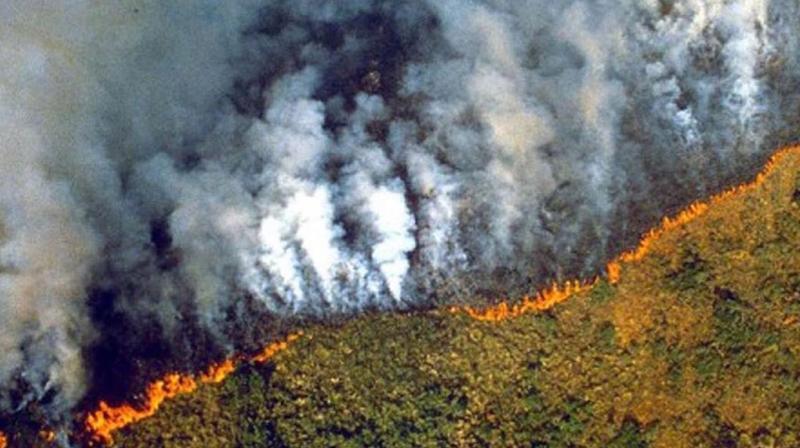Realistic impact of Amazon rainforest fires
Read on to know the real consequences that the Amazon rainforest fires have.

The Amazon rainforest fires have garnered immense attention in the recent weeks, with the devastating effects being the centre-point of international discussions. Amidst the environmental crisis, a false statistic implying that 20 per cent of the world’s oxygen comes from the Amazon rainforest has been spreading as rapidly as the fires. Though there are many drastic repercussions, this particular consequence isn’t one of them.
However, the fact seems to have been used multiple times all over. So much so, that French President Emmanuel Macron wrote in a tweet, “Our house is burning. Literally. The Amazon rain forest - the lungs which produces 20% of our planet’s oxygen - is on fire. It is an international crisis.”
The truth is that the Amazon rainforest supplies about a fraction of the world’s total oxygen. While different studies cite different numbers, it certainly isn’t a whopping 20 per cent. The Atlantic states that the rainforest accounts for about 6 per cent of the oxygen created by photosynthetic organisms that are alive on Earth today.
But, there’s another twist to this. The world’s major source for oxygen isn’t photosynthetic organisms like the trees. According to the Scientific American, most of the oxygen on Earth comes from the oceans, rather, to be specific, the phytoplankton. Phytoplankton are tiny algae that live in water.
None of this implies that the fires in the rainforest don’t have a massive impact on the planet. The consequences are drastic, and are not just restricted to the world’s oxygen supply. But, relying on false statistics isn’t the ideal way to go.
Other effects of the Amazon rainforest fires aren’t directly related to oxygen loss, but are as significant. As Vox brings out, a major consequence of the fires could be erratic rainfall patterns across the globe. The publication reports that trees play a major role in dictating rainfall patterns, because they absorb water and release it back into the sky, by a process called evapotranspiration.
George Mason University and the National Institute of Science and Technology for Brazil report that the Amazon is responsible for approximately half of its own rainfall. Considering the fact that Brazil is home to about 60 per cent of the rainforest, there could be substantial agricultural and cultural devastation. The indigenous tribes, for instance, are under immense threat.
Also, if a major chunk of the rainforest is burnt, then the area will experience significant changes in climate, and might turn into a savanna, according to The New York Times. Plus, the weather patterns will also undergo changes. Since fewer trees will be there to take in all the carbon, the amount of carbon in the atmosphere will rise, the publication explains.
Regardless of the facts, the burning rainforest has created an upheaval not just in environmental terms, but has also entailed a lot of political and humanitarian discussions.

